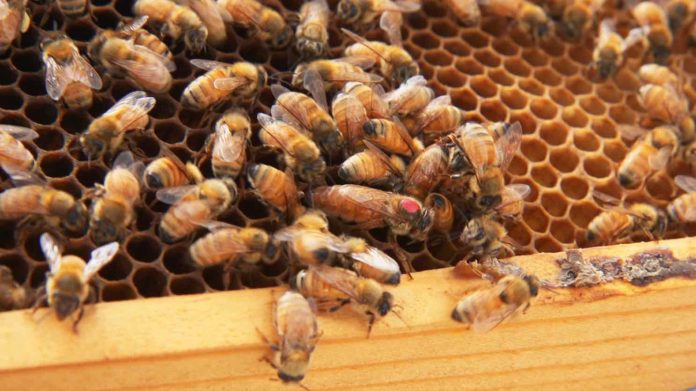People that study bees have known that the diet of worker bees and queens are different for centuries. The scientists presumed that a constant diet of royal jelly for larvae that are destined to be queens was the only difference in diet that caused a bee to become a queen bee. New research conducted by May R. Berenbaum with the Department of Entomology at the University of Illinois at Urbana-Champaign and colleagues is the first to reveal the chemistry that makes a bee a queen.
Queen bee larvae are fed a diet that is exclusively royal jelly by nurse bees. Nurse bees feed bee larvae that are destined to be drones royal jelly for three days and then switch the diet of future worker bees to pollen and honey. The researchers found that the difference in diet not only determines the sex of the bee larvae but controls the ability to reproduce. The key to the difference is phytochemicals that are in pollen and honey. Phytochemicals are collected in the pollen as bees go about their regular pollen collection.
The phytochemicals, l p-coumaric acid and P-coumaric acid, were found to be the major influence on determining what bee becomes a queen. Phytochemicals are genetically active substances. The lack of these two chemicals in a queen bee larva’s diet is responsible for the development of larger ovaries, a larger size, and the capacity to reproduce in queen bees.
This discovery may be one answer to the decline of honeybee populations across the world. The physical control of a bee larva’s diet by men could produce more queen bees. More queen bees would produce more bees. Some honeybees have shown resistance to pesticides that are one cause of colony collapse disorder. Selection of resistant larvae to become queen bees would confer the resistance to all of the queen’s offspring.















